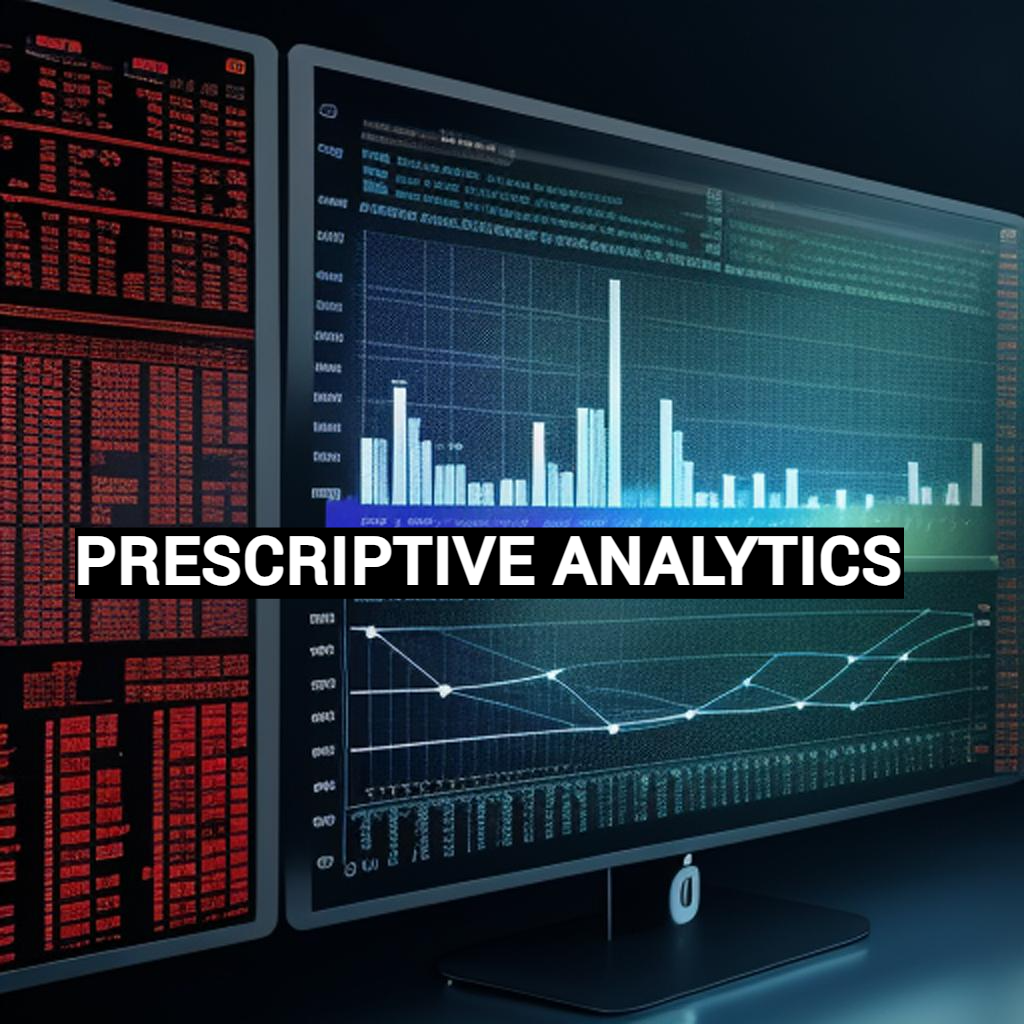Unveiling the Power of Prescriptive Analytics: Shaping the Future of Decision-Making
 Aayan
Aayan
Introduction
Prescriptive analytics is a phrase that has gained a lot of attention recently in the always changing field of data analytics. Prescriptive analytics goes above and above by not just forecasting outcomes but also providing practical advice. Descriptive analytics offers insights into previous data, while predictive analytics predicts future patterns. This innovative sector is revolutionizing decision-making, process optimization, and competitive advantage for enterprises.
Understanding Prescriptive Analytics
Prescriptive analytics analyzes large datasets and suggests the optimal course of action by utilizing sophisticated algorithms, artificial intelligence, and machine learning. Prescriptive analytics provides a solution to the important issue, "What should we do about it?" in contrast to predictive analytics, which focuses on projecting potential outcomes.
Key Components of Prescriptive Analytics
Data Collection and Integration: The first step in prescriptive analytics is the gathering and fusion of heterogeneous datasets from several sources. This can contain external data like market trends, historical documents, real-time data streams, and both organized and unstructured data.
Predictive Modeling: Building on predictive analytics, prescriptive models anticipate future outcomes using machine learning algorithms using historical data. By highlighting patterns, linkages, and potential outcomes, these models aid in decision-making.
Decision Optimization: Prescriptive analytics is primarily concerned with decision optimization. This entails weighing several potential courses of action and selecting the best one in accordance with established corporate goals, limitations, and key performance indicators (KPIs).
Simulation and What-If Analysis: What-if analysis and simulation are frequently used in prescriptive analytics to evaluate how various options could affect results. This enables companies to investigate several situations prior to arriving at a definitive conclusion.
Recommendation Engine: Prescriptive analytics uses recommendation algorithms to deliver actionable insights. These engines recommend the optimal course of action based on the analysis's discovered restrictions and intended results.
Applications of Prescriptive Analytics
Supply Chain Optimization: Prescriptive analytics suggests the best routes, stock levels, and manufacturing schedules to assist companies improve their supply chains. This reduces expenses, guarantees on-time delivery, and improves overall operational effectiveness.
Financial Decision-Making: In the financial industry, prescriptive analytics aids in portfolio optimization, risk management, and fraud detection. It helps businesses to decide on investments, pricing policies, and compliance initiatives with knowledge.
Healthcare Management: Prescriptive analytics is used by healthcare companies to improve patient outcomes, allocate resources optimally, and increase overall operational efficiency. It supports cost-effective healthcare management, lower readmission rates, and individualized treatment regimens.
Marketing Strategy: Prescriptive analytics aids marketing organizations in improving campaigns, consumer segmentation, and pricing strategies. It assists companies in customizing their strategy in light of customer behavior, industry developments, and rivalry.
Conclusion
Prescriptive analytics is becoming a more potent tool as we approach a data-driven world, enabling firms to make well-informed, strategic decisions. Businesses may negotiate complexity, reduce risk, and grasp growth opportunities by utilizing machine learning and sophisticated algorithms. Prescriptive analytics has the capacity to change the world, and as more and more people realize this, it is becoming evident that this novel method is a major departure from the way we currently use data to influence the future.
If you're interested in learning more about the topic of social data Analytics, consider the Data Analytics Course in Noida, Patna, Jaipur, Lucknow, etc This educational project not only provides access to information, but also acts as a compass, assisting marketers in utilizing social media analytics skillfully and morally, so influencing the development of responsible and influential insights in the future.
Subscribe to my newsletter
Read articles from Aayan directly inside your inbox. Subscribe to the newsletter, and don't miss out.
Written by
